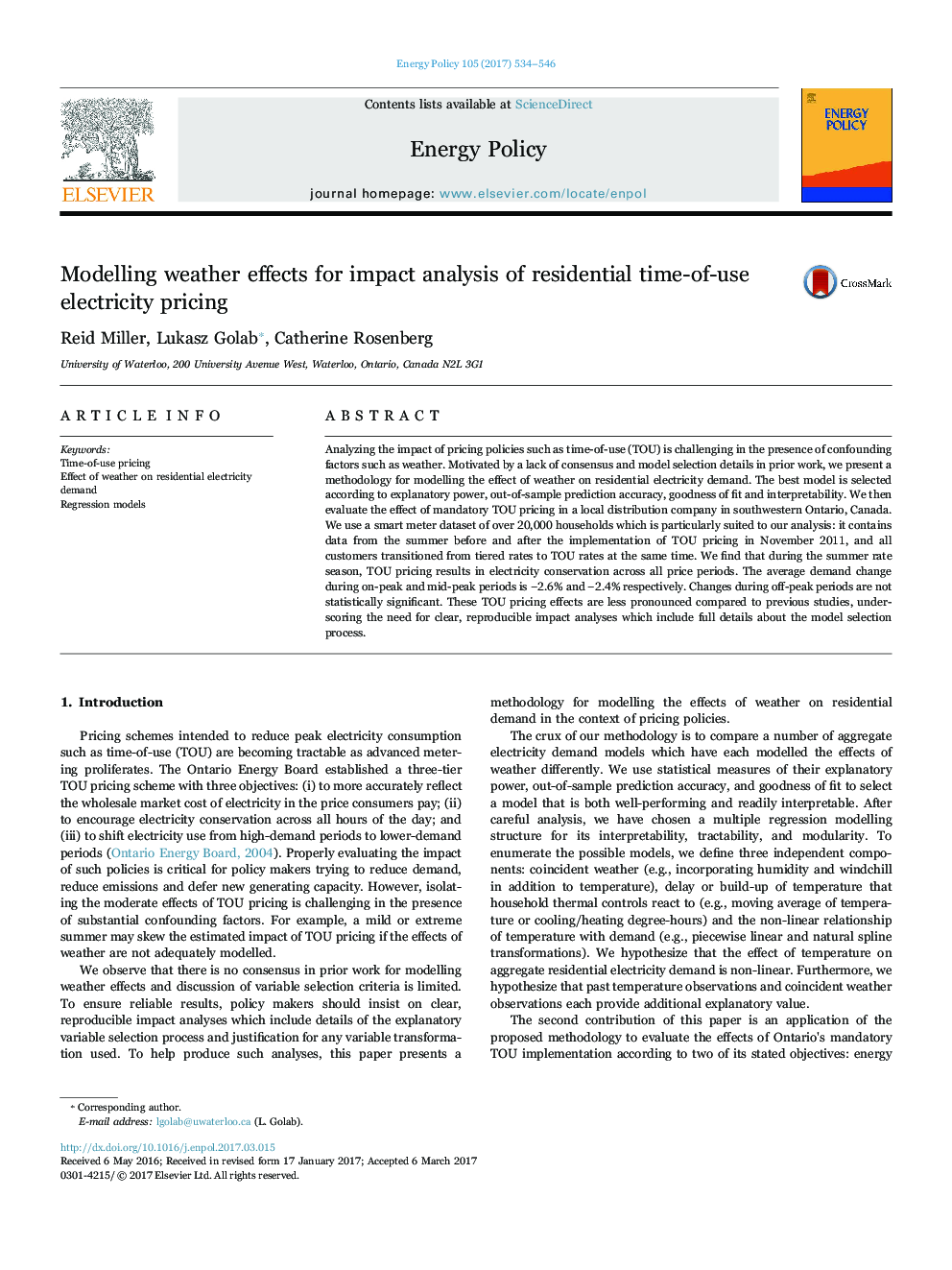| Article ID | Journal | Published Year | Pages | File Type |
|---|---|---|---|---|
| 5105886 | Energy Policy | 2017 | 13 Pages |
Abstract
Analyzing the impact of pricing policies such as time-of-use (TOU) is challenging in the presence of confounding factors such as weather. Motivated by a lack of consensus and model selection details in prior work, we present a methodology for modelling the effect of weather on residential electricity demand. The best model is selected according to explanatory power, out-of-sample prediction accuracy, goodness of fit and interpretability. We then evaluate the effect of mandatory TOU pricing in a local distribution company in southwestern Ontario, Canada. We use a smart meter dataset of over 20,000 households which is particularly suited to our analysis: it contains data from the summer before and after the implementation of TOU pricing in November 2011, and all customers transitioned from tiered rates to TOU rates at the same time. We find that during the summer rate season, TOU pricing results in electricity conservation across all price periods. The average demand change during on-peak and mid-peak periods is â2.6% and â2.4% respectively. Changes during off-peak periods are not statistically significant. These TOU pricing effects are less pronounced compared to previous studies, underscoring the need for clear, reproducible impact analyses which include full details about the model selection process.
Keywords
Related Topics
Physical Sciences and Engineering
Energy
Energy Engineering and Power Technology
Authors
Reid Miller, Lukasz Golab, Catherine Rosenberg,
